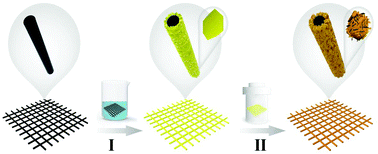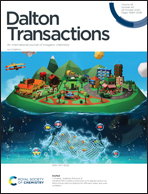A highly efficient electrochemical oxygen evolution reaction catalyst constructed from a S-treated two-dimensional Prussian blue analogue†
Abstract
It is highly desirable for porous coordination polymers (PCPs), including metal–organic frameworks (MOFs) and Prussian blue analogues (PBAs), to retain their intrinsic characteristics in electrocatalysis, instead of being used as precursors or templates for further total conversion to other compounds via high-temperature calcination. Here, a S-treated two-dimensional (2D) CoFe bimetallic PBA grown on carbon fiber paper (CFP) (named S-CoFe-PBA/CFP) is assembled and applied as a highly efficient oxygen evolution reaction (OER) electrocatalyst in 1 M KOH. The resultant S-CoFe-PBA/CFP demonstrates significantly improved OER catalytic activity; overpotentials of only 235, 259, and 272 mV are needed to drive current densities of 10, 50, and 100 mA cm−2, respectively, with a super low Tafel slope of 35.2 mV dec−1. Even more noteworthy, a current density of 90 mA cm−2 can be achieved when a potential of 1.5 V vs. RHE is applied, which is 6.4 times higher than that of commercial Ir/C in the same environment. The outstanding electrocatalytic performance can be ascribed to two reasons caused by the S-treatment process. On one hand, H+ from intermediates of *OH and *OOH can be captured by –SOx distributed on the surface of the catalyst, thus accelerating the breaking of O–H; on the other hand, partial phase transformation of CoFe-PBA leads to the in situ formation of amorphous CoSx nanogauze on the surface, and the resultant electronic interactions between the two phases contribute much to the improvement of charge transfer and adsorption for OER intermediates. This work provides a new avenue for the design of highly efficient PCP-based OER electrocatalysts.



 Please wait while we load your content...
Please wait while we load your content...